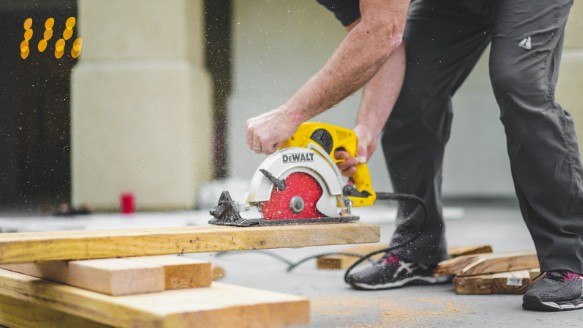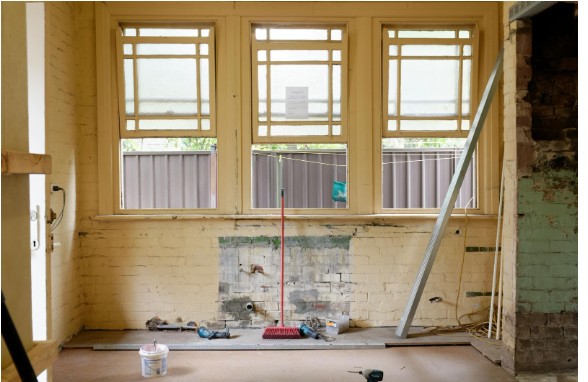Cleaning up after a construction project can often feel like a daunting task. Regardless of the size or scope of the project, the aftermath typically leaves behind debris, dust, and a general sense of chaos. With careful planning and a structured approach, tackling the cleanup can become manageable. However, restoring your space to its original condition, or even improving it, is essential after the construction work is done. This blog will explore practical strategies and techniques to clean up after construction efficiently, ensuring your space is pristine and welcoming once again.

Assessing the Area: Understanding the Scope of the Cleanup
Before diving into cleaning, it’s crucial to assess the area to understand the extent of the cleanup required. First, walk through the construction site and identify the different types of debris present. This can include large items like timber or drywall remnants and fine particles like dust covering surfaces and floors. Identify the materials that require special handling and disposal, such as hazardous waste or items that can be recycled. Don’t hesitate to ask for professional assistance if you feel the job is too big. According to the reputable post-construction cleaners behind Eshine Post Construction Cleaning, partnering with a reliable service can significantly ease the process. Their expertise ensures no detail is overlooked and cleanup is conducted safely and efficiently. Lastly, create a checklist based on your assessment to guide you through each cleaning phase, minimizing the risk of forgetting important tasks.
Gathering the Right Tools and Supplies
The next step involves gathering the right tools and supplies for the cleanup process. Different cleaning tasks require specific tools; using the correct ones can make a significant difference. Basic supplies typically include heavy-duty trash bags, brooms, dustpans, vacuums, and microfiber cloths. A shovel or pressure washer may be necessary for tackling stricter debris. If the cleanup involves a considerable amount of dust, industrial-grade vacuum cleaners designed for construction debris may help. Additionally, having a variety of cleaning solutions, like degreasers and biodegradable products, can enhance your efficiency. Once equipped with the necessary tools, you are ready to begin cleaning, ensuring you have access to everything you’ll need beforehand to avoid unnecessary interruptions.
Dealing with Dust and Debris
Dust tends to be the most significant nuisance after construction and can quickly infest every surface, penetrating hard-to-reach areas. Start by removing larger debris, ensuring you clear floors to have easier access when addressing dust. After clearing the more oversized items, dust from the highest surfaces downwards, allowing the debris to fall onto the lower surfaces, which can be cleaned afterward. Microfiber cloths can capture more dust particles than traditional cleaning rags and cloths. Consider using an air scrubber to improve air quality and reduce airborne particles in spaces with significant dust accumulation. Regularly changing your vacuum filter is also recommended because construction dust can clog filters quickly, diminishing effectiveness. Be diligent in your approach, and ensure all surfaces—walls, floors, and furniture—are wiped down at least twice. A comprehensive dust management strategy can make your space welcoming once again.
Cleaning Windows and Other Surfaces
Windows often suffer during construction, with streaks, tape residue, and paint splatter proving particularly frustrating. Begin by removing protective coverings and ensuring the glass is clear of dirt and debris. A quality glass cleaner paired with a squeegee will help leave the windows sparkling. Pay attention to the window frames and sills, which can accumulate dust and paint chips; a damp cloth typically does the trick. Don’t forget fixtures and finishes within your home, such as light fixtures, cabinets, and countertops. Use appropriate cleaning solutions to avoid damaging any surfaces. Natural cleaners made from vinegar and water are adequate replacements for harsh chemicals and can help eliminate residues without leaving harmful residues. Be meticulous in your approach, ensuring that every surface is adequately cleaned to restore the bright appearance of your home.
Proper Disposal of Waste
After tackling visible debris, it’s essential to dispose of waste properly. Construction cleanup can involve a range of materials, some of which may require unique disposal methods. For example, hazardous materials such as old paint, batteries, or chemicals should never be placed in regular trash; particular collection sites or hazardous waste facilities should be utilized. Familiarizing yourself with local regulations can help simplify the disposal process. Much of construction waste, including metal, wood, and cardboard, can often be recycled. Investigate local recycling options for construction materials to contribute to environmental sustainability.
Maintaining Cleanliness Post-Cleanup
Once the heavy lifting of cleaning is complete, ensuring the space remains clean is vital. Consistently addressing dust, spills, or clutter can prevent the building up of messes that could require extensive future cleanup. Setting up organization systems, such as storage solutions for tools and cleaning supplies, can further contribute to maintaining a tidy space. Regular deep cleanings scheduled on a seasonal basis will also prolong the life of your surfaces and fixtures. Incorporating these habits into your routine will ensure cleanliness and promote a healthier living environment.

Cleaning up after a construction project doesn’t have to be a stressful endeavor. You can navigate the cleanup process smoothly by assessing the area properly, gathering the right tools, and developing effective strategies. Remember that engaging local services when needed can save you time and effort. Dedication and the right approach will quickly transform your space from a construction zone to a welcoming environment.






